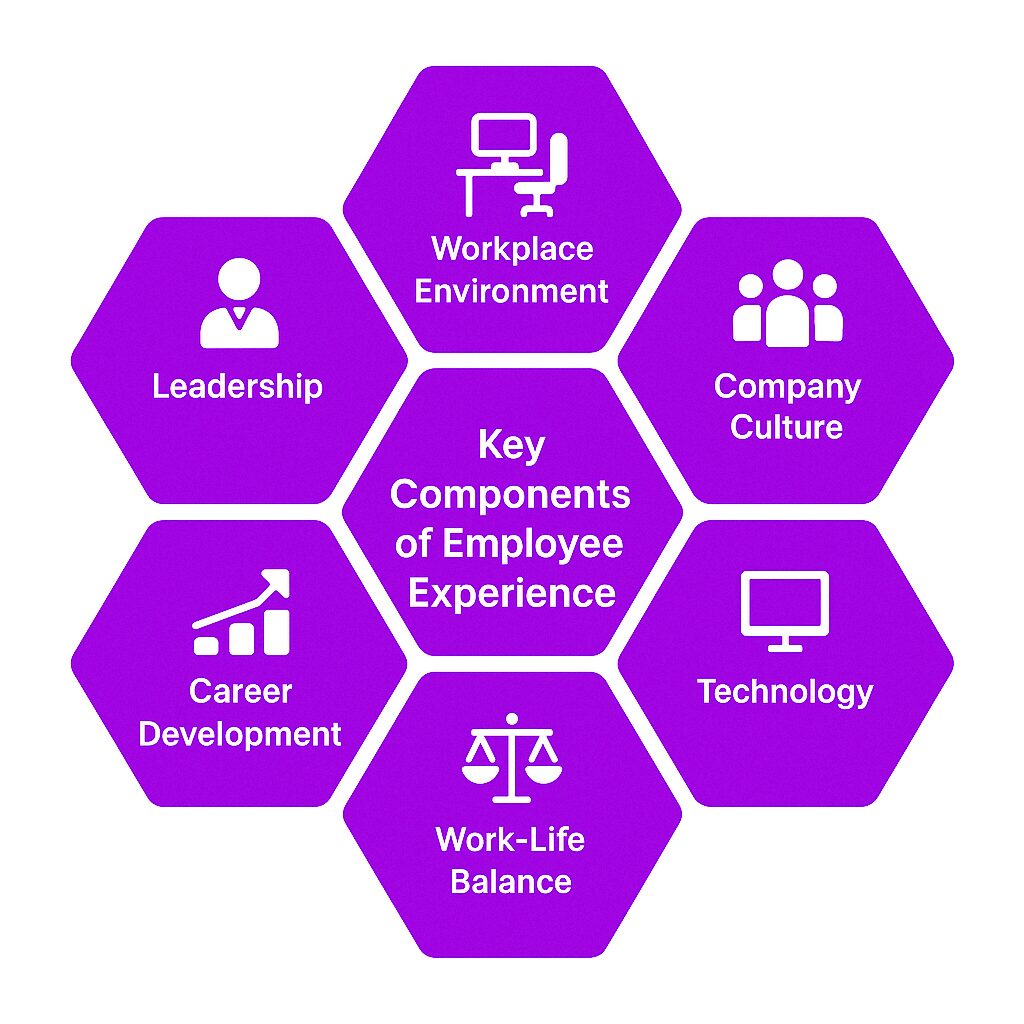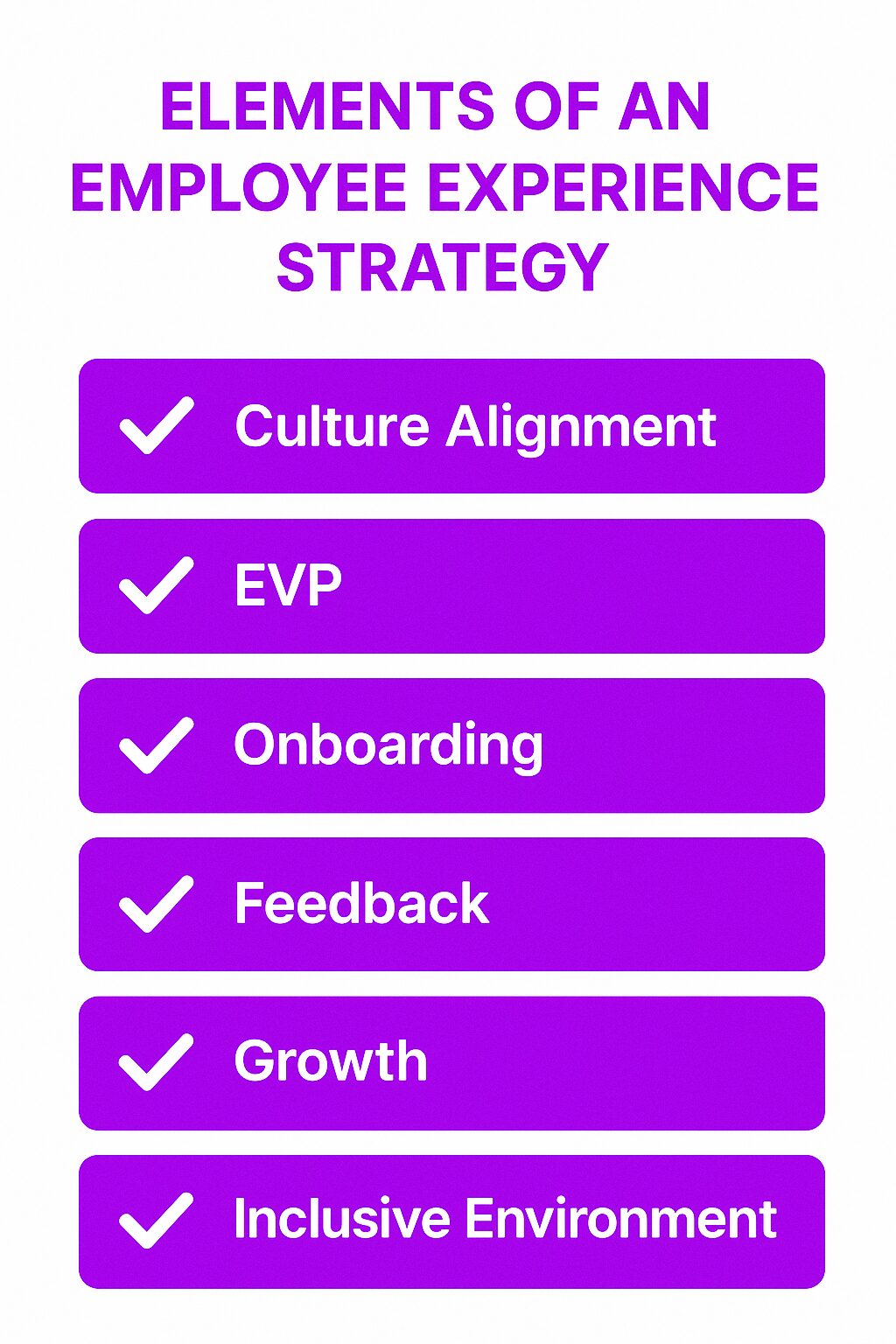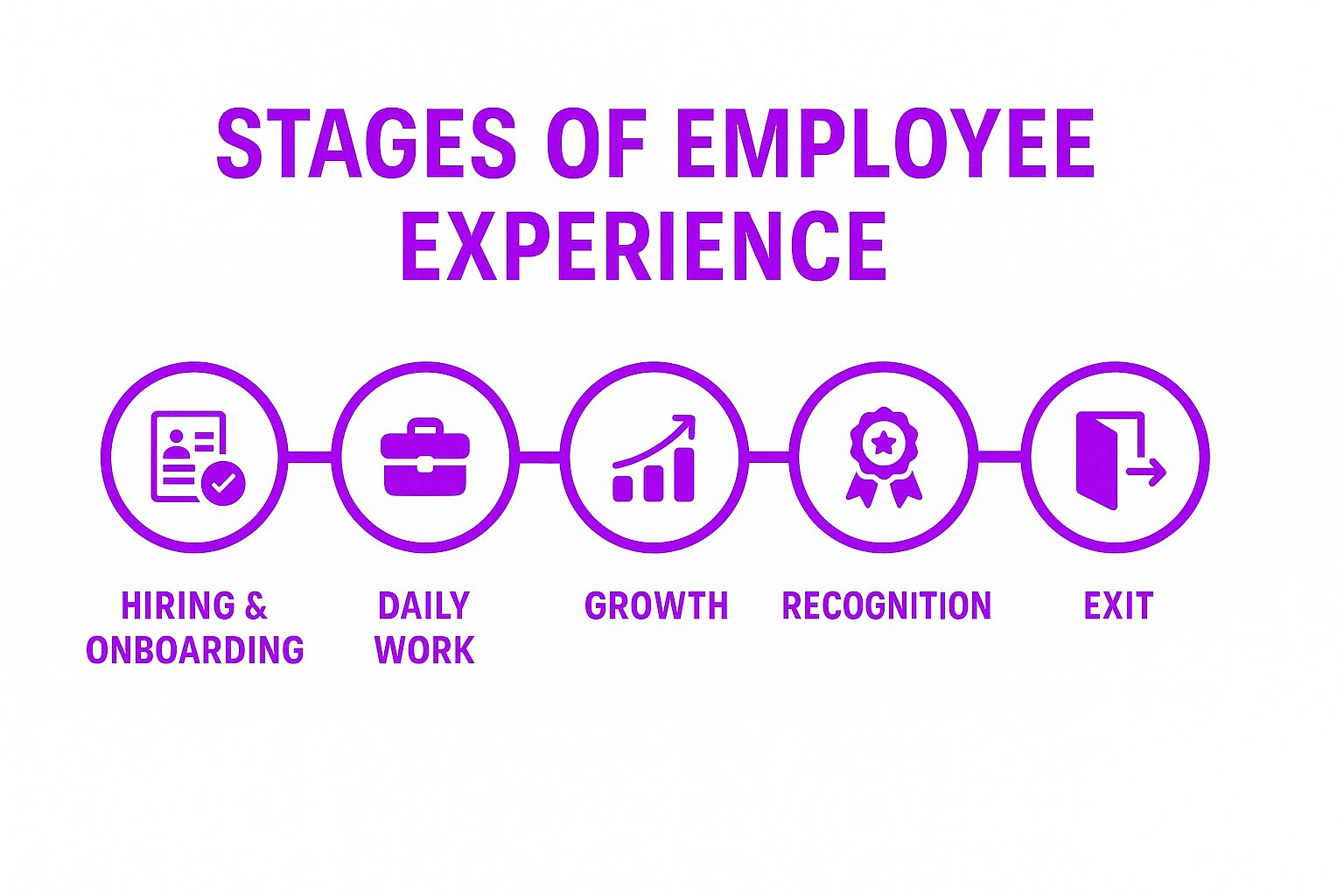What Is Employee Experience?
Employee experience is everything an employee encounters while working at a company. It includes interactions with colleagues, management, workplace tools, company policies, and overall culture, all of which can be structured within an employee experience framework. Every touchpoint, from the hiring process to the last day on the job, contributes to how employees perceive their workplace.
A strong employee experience leads to higher engagement, productivity, and job satisfaction. When employees feel valued and supported, they are more likely to contribute their best work. Organizations that neglect employee experience often face high turnover, low morale, and reduced performance.
Why Employee Experience Matters
A positive employee experience is not just about keeping workers happy. It directly affects business performance. Engaged employees are more productive, creative, and committed to company goals. Poor employee experience can lead to disengagement, burnout, and frequent turnover, which are costly and disruptive.
Companies that prioritize positive employee experiences attract and retain top talent. They also build a strong employer brand, making it easier to recruit skilled professionals. When employees enjoy their work environment, they provide better service to customers, leading to improved customer satisfaction and loyalty.
Key Components of Employee Experience
Workplace Environment
The physical and digital environment influences how employees feel about their work. A well-designed workspace, ergonomic furniture, and access to collaboration tools can enhance productivity. Remote and hybrid work options also contribute to a positive experience by providing flexibility.
Company Culture
Culture shapes how employees interact with each other and with leadership. A culture of trust, respect, and inclusivity creates a sense of belonging. Organizations that encourage open communication and recognize employees’ contributions build stronger teams.
Leadership and Management
The relationship between employees and their managers plays a major role in employee experience. Supportive leadership, clear expectations, and constructive feedback help employees feel motivated and engaged.
Technology and Tools
Employees expect fast, user-friendly tools that help them complete their tasks efficiently. Outdated or complex systems cause frustration and reduce productivity. Investing in modern technology improves collaboration and makes work processes smoother. Investing in employee experience platforms, such as digital assistants and chatbots, can further enhance productivity and satisfaction.
Career Development
Providing learning opportunities, mentorship, and career growth paths shows employees that the company values their development. Employees who see a future within the organization are more likely to stay and contribute.
Work-Life Balance
Employees need flexibility to balance personal and professional responsibilities. Companies that offer remote work, flexible hours, and wellness programs help employees manage stress and maintain a healthy work-life balance.
Employee Experience Strategy
An effective employee experience strategy is crucial for organizations to attract, retain, and engage top talent. A well-designed strategy should focus on creating a positive employee experience that aligns with the company’s overall mission and goals. This can be achieved by understanding the employee journey, identifying pain points, and developing targeted initiatives to address them.
A successful employee experience strategy should include the following elements:
-
A clear understanding of the company culture and values
-
A well-defined employee value proposition (EVP)
-
A comprehensive onboarding process
-
Regular employee feedback and recognition
-
Opportunities for growth and development
-
A positive and inclusive work environment
By implementing an effective employee experience strategy, organizations can improve employee engagement, productivity, and retention, ultimately leading to increased customer satisfaction and business success.
Stages of Employee Experience
1. Hiring and Onboarding
The employees experience starts before an employee even joins the company. The hiring process sets expectations, and onboarding determines how quickly a new hire integrates into the team. A structured onboarding process helps employees feel welcome and prepared for their roles.
2. Daily Work Experience
The day-to-day experience includes workload, team collaboration, and interactions with managers. Employees should have the resources and support they need to perform their jobs effectively.
3. Growth and Development
Ongoing training, mentorship, and career advancement opportunities keep employees engaged. Organizations that invest in employee development benefit from higher retention rates and a more skilled workforce.
4. Employee Recognition
Recognition programs reinforce positive behavior and motivate employees. Acknowledging hard work, whether through promotions, bonuses, or public appreciation, boosts morale.
5. Exit Experience
The way an organization handles resignations, layoffs, and retirements affects its reputation. A respectful and supportive offboarding process leaves a lasting positive impression and encourages former employees to recommend the company to others.
Benefits of a Strong Employee Experience
-
Higher employee engagement and motivation
-
Increased productivity and efficiency
-
Reduced turnover and hiring costs
-
Stronger company culture and collaboration
-
Better customer experience due to happy employees
Challenges in Employee Experience Management
Resistance to Change
Employees and management may resist new policies or technology, making it difficult to improve employee experience. Transparent communication and leadership support help overcome resistance.
Measuring Employee Experience
Unlike financial metrics, employee experience is subjective and harder to quantify. Surveys, feedback tools, and performance analytics provide insights into employees feelings and overall sentiment.
Managing Remote Work
Remote and hybrid work models require new strategies for communication, collaboration, and engagement. Companies must ensure remote employees feel included and supported.
How to Improve Employee Experience
Listen to Employees
Regular surveys, one-on-one meetings, and anonymous feedback channels help identify employee concerns. Acting on feedback shows employees that their voices matter.
Provide the Right Tools
Investing in modern technology simplifies work processes and reduces frustration. Collaboration tools, project management software, and internal communication platforms improve efficiency.
Recognize and Reward Employees
Acknowledging employees’ contributions fosters a culture of appreciation. Personalized recognition, promotions, and financial incentives reinforce positive performance. Personalized recognition and rewards contribute to an exceptional employee experience, boosting morale and retention.
Support Career Growth
Offering training programs, mentorship, and career progression opportunities keeps employees motivated and invested in their roles.
Promote Work-Life Balance
Flexible schedules, wellness programs, and mental health support improve overall well-being and reduce burnout.
Employee Feedback
Employee feedback is a critical component of any employee experience strategy. It provides organizations with valuable insights into the employee journey, helping to identify areas for improvement and opportunities for growth. Regular feedback can be collected through various channels, including employee experience surveys, focus groups, and one-on-one meetings.
Effective employee feedback should be:
-
Regular and timely
-
Actionable and specific
-
Anonymous and confidential
-
Used to drive positive change and improvement
By collecting and acting on employee feedback, organizations can demonstrate their commitment to creating a positive employee experience, leading to increased employee engagement, retention, and productivity.
Connection to Customer Experience
There is a direct correlation between employee experience and customer experience. Happy and engaged employees are more likely to provide exceptional customer service, leading to increased customer satisfaction and loyalty. Conversely, a poor employee experience can lead to decreased customer satisfaction and loyalty.
Organizations can leverage their employee experience strategy to improve customer experience by:
-
Focusing on employee engagement and recognition
-
Providing opportunities for growth and development
-
Creating a positive and inclusive work environment
-
Encouraging employee feedback and empowerment
By prioritizing employee experience, organizations can create a positive ripple effect that extends to their customers, ultimately leading to increased business success and competitiveness.
Related Concepts
Employee Engagement
Employee engagement refers to the level of enthusiasm and commitment employees have toward their work. While engagement is influenced by employee experience, they are not the same. A positive employee experience fosters engagement, but engagement also depends on individual motivation and job fit.
Digital Employee Experience
The digital aspect of employee experience focuses on the technology and tools employees use daily. Companies that prioritize a seamless digital experience help employees work efficiently and collaborate better.
Employer Branding
How a company treats its employees affects its reputation in the job market. A strong employee experience strengthens employer branding, making it easier to attract and retain talent.
Real-World Examples of Employee Experience Success
Google is known for its strong employee experience, offering flexible work options, career development programs, and an inclusive culture. These efforts contribute to high retention and employee satisfaction.
Microsoft
Microsoft prioritizes employee well-being by offering remote work options, continuous learning opportunities, and recognition programs. These initiatives enhance productivity and engagement.
Salesforce
Salesforce invests in employee experience by promoting work-life balance, diversity, and leadership development. The company’s approach has led to a strong employer brand and high employee retention.
The Future of Employee Experience
With remote work and digital transformation reshaping workplaces, companies must adapt their employee experience strategies. AI-driven analytics, virtual collaboration tools, and personalized employee journeys will play a key role in shaping the future of work. Organizations that invest in employee experience will build more engaged, loyal, and productive teams.








